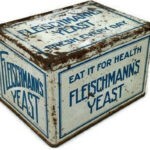Extraordinary artists
created extraordinary images
in agencies’ art departments
Art directors in Advertising Agencies headed multi-talented teams capable of reproducing extraordinary images of products sold by the agency’s clients. One might be a lettering artist who could hand-letter technically perfect headlines and sub-heads. Another might concentrate on fashion drawings. A third might be a general artist who reproduced images of diamond rings for the jewellery client, complex detailed illustrations of machinery, or images of steaming mouthwatering soup for Campbells.
Today the art department is the Creative Department with Creative Directors, Web Developers, Sketch/Storyboard Artists, Copywriters and Designers.
And the artists today in Creative Departments? They are described as “production artists who have the thankless task of preparing campaigns for print. This job includes setting up the files for the printing press, creating versions of one ad for multiple publications and media, and also creating updates to existing campaigns.” Not much call for artistic talent in that job!
Although the first photographic process — heliography — was invented around 1824 by Nicéphore Niépce, photographic images weren’t suitable for the print world for another 120 or so years.

Probably the work of a staff artist, all the images above are hand drawn — the plate of asparagus, the toast, the gravy bowl, the logo and slogan. Admire the detail in the shine of the fork. Note also that the artist signed his/her work
The full page advertisement below appeared in McCall’s Magazine, November 1926


The red section in the bottom left of the Asparagus advertisement shows that the product is packed in 3 sizes of cans. TIPS in small square and round cans and LONG SPEARS in tall square cans.
You could send for a FREE recipe book.
The advertiser is the California Canners League which was formed in 1905. In 2017 they changed their name to California League of Food Producers (CLFP).
On that site you will see how print advertisements progressed from the 1911 Coca-Cola advertisement with unpretentious drawings, through the famous “Uncle Sam wants YOU” of 1918, to hand-drawn watches, automobiles, cigarettes, radios. The use of photographs as the image of choice is evident from 1950 to the present day.










